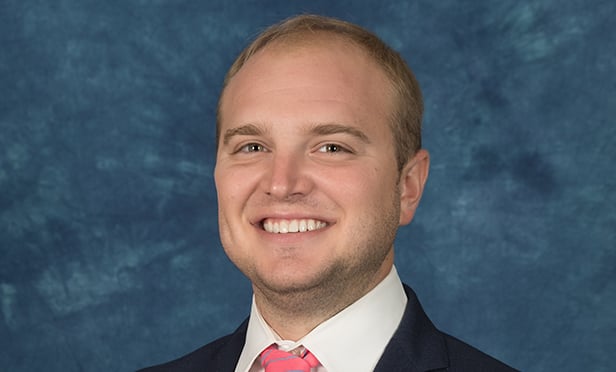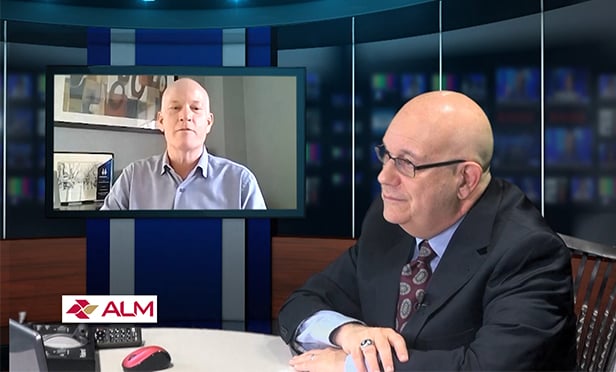Eco-friendly projects are sprouting up all over Florida now, partly because the early examples of green building have showed that it really does save money over time. Plus, government edicts are promoting a green future in a state historically noted for its love of concrete and cavalier attitude toward the environment.
In July, Governor Charlie Crist—acknowledging that Florida, with its 1,350 miles of coastline, has the most to lose from rising seas of any state—issued several executive orders with mandates for energy conservation, including one which calls for all state-owned buildings to be LEED certified and new buildings to strive for LEED certification at the highest level. Crist has also directed the state's department of community affairs to convene the Florida Building Commission to revise the Florida Energy Code for property construction, which is part of the state's building regulations. The 2007 code, which is about to be adopted, will take affect in late 2008. But the Governor wants to increase the energy performance of new construction by at least 15% beyond those standards.
"I really think Charlie Crist's orders are a big deal," says Christina Newburgh, president of the Florida Capital Region chapter of the US Green Building Council and an engineer intern at Barkley Consulting Engineers Inc. in Tallahassee. However, she concedes enforcement will not be easy because it will require tax revenues, so residents might fight it. The USGBC has seven chapters in the state.
In the past year, about 170 real estate projects in Florida have been registered with the USGBC, says Rob Hink, president of the South Florida chapter of the organization. This includes projects in the neighborhood development category, which involve multiple buildings. Registration signifies that a building's developer is striving for some level of LEED certification. Normally, certification is only granted once the project is complete and evaluated. As of Oct. 15, there were 23 certified projects in Florida and almost 300 projects that have been registered.
The LEED system evaluates buildings based on five broad categories: sustainable site selection, water efficiency, energy efficiency, materials and resources, indoor environmental quality and innovation and design. There are four levels of certification: basic, silver, gold and platinum, each with progressively higher levels of sustainability, or green features.
Governor Crist's program may take years to fully implement since retrofitting existing buildings may be more complicated than building green from the outset, depending on the age and current efficiency of the structure, says Hink. But Crist's edicts are already being incorporated.
Hink, who is a LEED consultant for the Spinnaker Group, a sustainable design consulting firm in Weston, says that his company is working on designs for the Florida First District Court of Appeals in Tallahassee, the developers of which are striving for a platinum LEED rating. "It will be the first new building to strive for platinum certification since Governor Crist's proclamation," he says.
Only two projects in South Florida are currently LEED certified, notes Hink: the Christine Lynn College of Nursing at Florida Atlantic University in Boca Raton and the South Broward Regional Library in Pembroke Pines. Yet there are half a dozen projects in the works with 100,000 sf or more in or near Downtown Miami that are striving for a LEED seal.
Miami is one of a number of Florida municipalities racing to become green. Currently, city officials are working on the passage of Miami 21, a new zoning regulation that emphasizes pedestrian-friendly development. The latest incarnation of the code, which is mired in political controversy, calls for all new buildings over 50,000 sf to obtain LEED silver certification, says Robert Ruano, director of grants and sustainable initiatives for the city.
If the Miami 21 rule is adopted, it will be one of the most stringent green building requirements in the country, says Hink.
A few miles south, Miami Green, a 120,000-sf, 13-story office condo building, broke ground last December. Its developer, Miami-based Holly Real Estate, is striving for LEED silver certification. Among the development's green features will be a xeriscaped rooftop garden and three forms of public transportation nearby including the Metrorail rapid transit line.
In Coconut Creek, roughly 40 miles north of Downtown Miami, the Promenade at Coconut Creek, a 23-acre lifestyle center, is being developed by Columbus, OH-based Stanbery Development. The project will be part of a New Urbanist mini-downtown and will have 250,000 sf of retail, between 50,000 sf and 100,000 sf of office space, two parking garages and up to 450 residential units. Although the developers will be striving for LEED certification for the project, the level has yet to be determined.
In Sarasota, Trammell Crow Co. is developing a green office building for FCCI Insurance Group, a local firm. The four-story, 105,000-sf project, which is expected to break ground in early 2008, will use various shading devices, such as a deep roof overhang, mostly on the south side, where the greatest solar heat load occurs, says Steve Belflower, architectural project manager for the building with Orlando-based HuntonBrady Architects. The building's north side will be all glass, because it is always in shade, but there will be less glass on the south side, which receives more sunlight, he says. "This is unique, because most buildings are not designed to address solar heat loads," Belflower says. The building, which will also employ xeriscaping to save water, is expected to receive silver LEED certification, he says.
Although there is general agreement that green buildings save money in the long run, some developers continue to use conventional building methods out of a fear that eco-friendly construction methods and the initial outlay for green technology will be cost prohibitive. But it doesn't have to be that way, says Josh Bomstein, vice president of business development at Creative Contractors Inc. in Clearwater. "There are many shades of green," he notes.
Bomstein says his company builds schools and other public sector buildings that tend to be built better and have more expensive, and sometimes, greener features than other types of buildings. "If you are constructing a low-cost strip center, maybe building green is a bigger leap, but for the types of assets we build, there is not a substantial cost premium," he says. For the Community Center at Dunedin, near Tampa, which was certified silver in 2007, Bomstein's company spent anywhere from 1% to 1.5% more than if the 45,000-sf building were not green, he says.
"From data I've seen, even for LEED platinum certification, the cost of a green building may be just 6% higher," than a conventional building, Bomstein says. A lot of good design practices are inherently green, he notes.
Moreover, there can be significant savings from building green, says Mike Hess, principal at X-nth, an engineering firm in Maitland. "With most projects, just by putting in efficient plumbing fixtures, such as low-flow toilets, you can get up to 30% to 40% more water efficiency," than by following standard practices in the US, he says.
In Florida, some LEED credits are easy to obtain, while others are much harder, simply because of the climate. "We have two resources that help us—rainfall and sun," says Hess. "We get about four to five feet of rain every year, on average, so rainwater collection typically gives you more water than you need in a commercial building. Plus, we have a lot of sun, so solar hot water makes sense. But having a humid environment drives up air conditioning expenses and presents other challenges," such as having to prevent mold formation, he says.
Maximizing green space on a site is another way to obtain LEED credits relatively easily in South Florida, says West Palm Beach-based Jim Wells, director of pre-construction at the Weitz Co., headquartered in Des Moines. "There is more developable land here than in high density, urban areas," he says.
Also, one of the goals of being green is to keep water on the parcel, Wells says. "If you develop in Florida, it is a base requirement," to retain storm water run-off on the site, so you're not paying more to achieve that credit for green development, he says.
However, it can be difficult to get LEED points for using regional materials in Florida. According to LEED criteria, a builder must draw a 500-mile circle around his project and obtain a certain amount of building materials from within that circle. In Miami, if you draw a 500-mile radius, probably 60% of that area is water, Wells notes.
© Touchpoint Markets, All Rights Reserved. Request academic re-use from www.copyright.com. All other uses, submit a request to [email protected]. For more inforrmation visit Asset & Logo Licensing.






